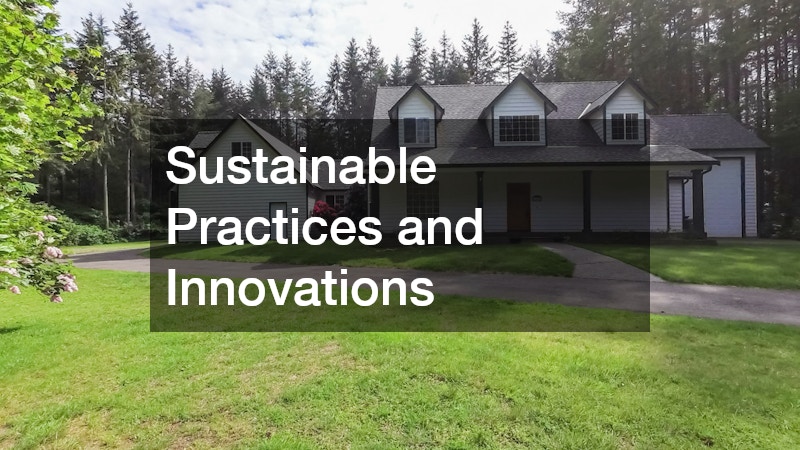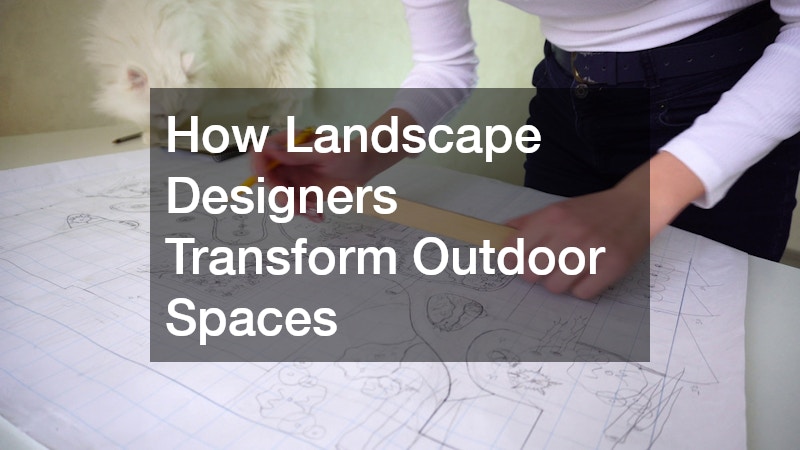Landscape design plays a crucial role in transforming outdoor spaces into both functional and aesthetically pleasing environments. It requires a careful balance of creativity, technical skills, and environmental awareness to craft spaces that meet the diverse needs and preferences of clients. Landscape designers are the professionals who bring these visions to life, employing their expertise to enhance the beauty and functionality of outdoor areas.
Key Elements of Landscape Design
Design Principles
At the heart of landscape design are fundamental principles such as balance, contrast, and harmony. Designers apply these principles to ensure cohesive outdoor spaces that are visually appealing.
By carefully selecting plant varieties, arranging pathways, and integrating hardscape elements, landscape designers create environments that invite interaction and appreciation.
Balance in landscape design is about creating a sense of equilibrium, whether symmetrical or asymmetrical. Contrast brings vibrancy and highlights certain elements within the design, such as using varying plant heights or different textures. Harmony, on the other hand, ties the elements together, ensuring each part of the landscape complements the other.
These design principles are not only about aesthetics but also about functionality. Landscape designers consider how spaces will be used, ensuring that beauty does not compromise usability. From patios to water features, every component is designed to encourage enjoyment and relaxation while maintaining practicality.
Incorporating Natural Features
The incorporation of natural features is a vital component of landscape design, enhancing both beauty and functionality. Designers often use plants, water, and stones to create inviting and sustainable outdoor environments. These elements bring the landscape to life, offering sensory experiences through sight, sound, and touch.
Plants are chosen for their aesthetic appeal, ability to thrive in specific climate conditions, and contribution to biodiversity. Water features like fountains or ponds can serve as focal points and contribute to the calming ambiance of a garden. Stones and rock formations are not only decorative but also practical, providing pathways, seating, or natural barriers.
Effective use of these natural elements requires a deep understanding of ecological principles. Landscape designers must consider everything from soil type to sunlight exposure to ensure that each feature is sustainable and maintains its intended function. This thoughtful integration into the design promotes environmental stewardship and longevity of the landscape.
How Landscape Designers Customize Projects for Different Clients
Understanding Client Needs
Customizing landscape design projects starts with a deep understanding of the client’s needs and desires. Landscape designers conduct detailed consultations to gather insights and preferences, ensuring that the final design reflects the client’s vision. This process involves discussing the purpose of the space, desired aesthetic, and any specific requirements or limitations.
By interpreting these needs, designers can tailor their approach to each project, whether it’s creating a family-friendly backyard or a peaceful retreat for relaxation. Communication between the client and designer is essential to aligning expectations and incorporating personal tastes into the design. This collaborative process results in a personalized and satisfying outcome for the client.
Landscape designers also educate clients about potential design options and constraints. They provide insights into what is feasible based on budget, space, and environmental factors. This professional guidance ensures that clients are informed decision-makers in the transformation of their outdoor spaces.
Adaptation to Environment and Geography
Adapting landscape designs to local environments and geographical contexts is critical for success. Designers must consider local climate, soil conditions, and native plant species to create sustainable landscapes. This approach not only ensures ecological compatibility but also enhances the long-term viability of the design.
Designers assess various environmental factors, including wind patterns, sunlight exposure, and seasonal changes. These considerations allow them to select appropriate plant species and materials that will thrive in the specific conditions of a site. Through this process, landscape designers can create spaces that are not only beautiful but also resilient and eco-friendly.
Considering geography also means respecting the natural contours and features of the land. By working with the existing terrain, rather than against it, designers can minimize environmental impacts and maintain the area’s natural charm. This thoughtful approach to design fosters a sense of harmony between the man-made and natural elements.
Techniques and Technologies Landscape Designers Use
Modern Design Software
Landscape designers leverage modern design software to enhance the precision and efficiency of their projects. These tools allow designers to create detailed plans, visualize landscapes, and explore creative layouts in a virtual environment. Software technology has revolutionized the design process, enabling designers to craft intricate designs before breaking ground.
Design programs provide realistic renderings and simulations, which help clients visualize the proposed outcomes of their investment. This ability to showcase various design scenarios supports collaborative decision-making between the designer and the client. Additionally, software tools enhance accuracy in measurements and material estimations, reducing the likelihood of costly mistakes.
Sustainable Practices and Innovations
Sustainability is a key consideration in contemporary landscape design, prompting designers to adopt eco-friendly practices and innovations. These practices include using drought-resistant plants, implementing efficient irrigation systems, and choosing sustainable materials. By prioritizing sustainability, landscape designers contribute to the conservation of resources and the reduction of environmental impact.
Innovations in technology have led to new techniques such as rainwater harvesting and green roofing. These methods not only enhance the functionality of landscapes but also promote ecological balance. Designers aim to create landscapes that reduce waste, improve energy efficiency, and integrate seamlessly with the natural environment.
Landscape designers play a pivotal role in transforming outdoor spaces into functional and beautiful environments. Their work combines creativity with technical skills and a deep understanding of environmental considerations. By applying design principles, customizing projects to individual needs, and utilizing modern technologies and sustainable practices, landscape designers craft spaces that enrich the lives of those who enjoy them.

